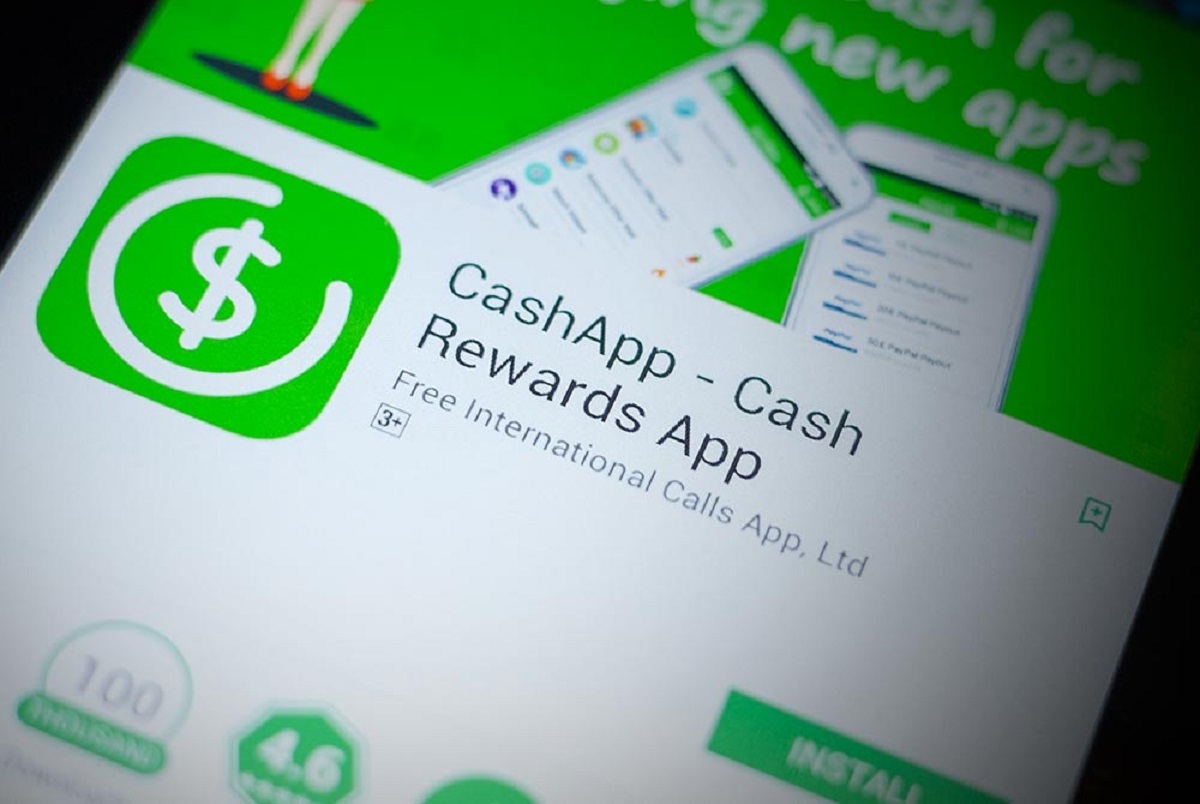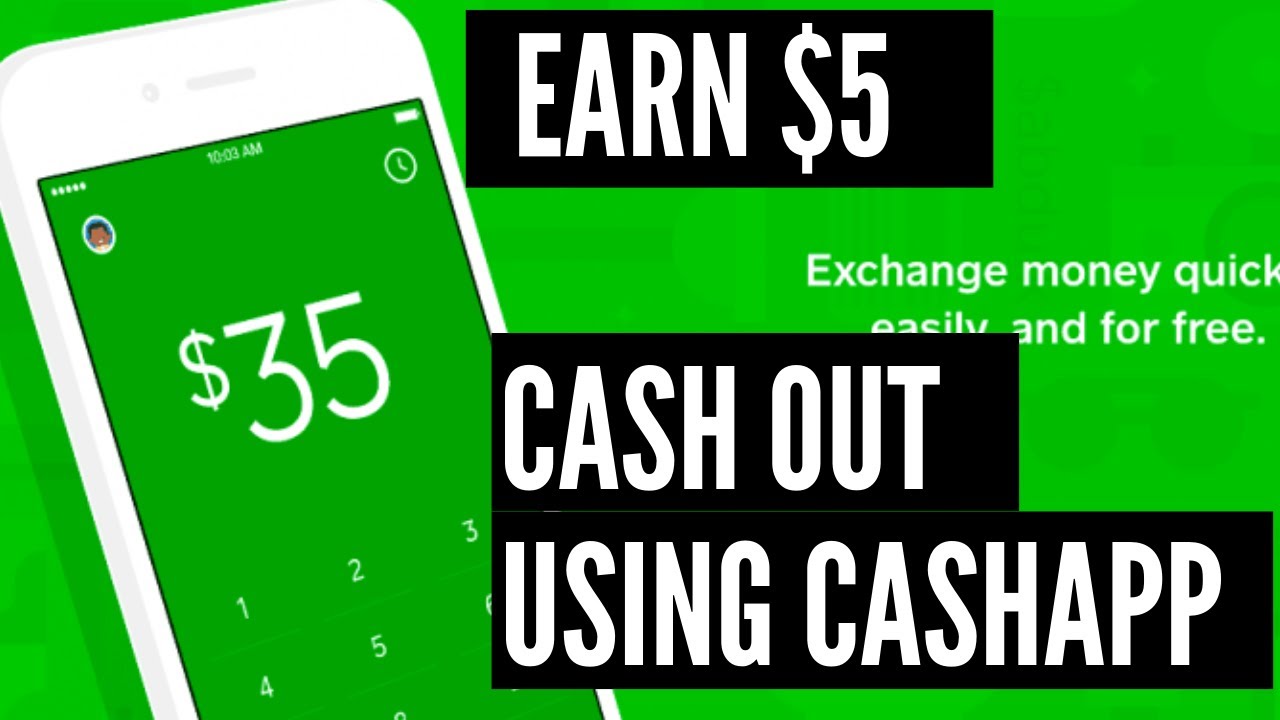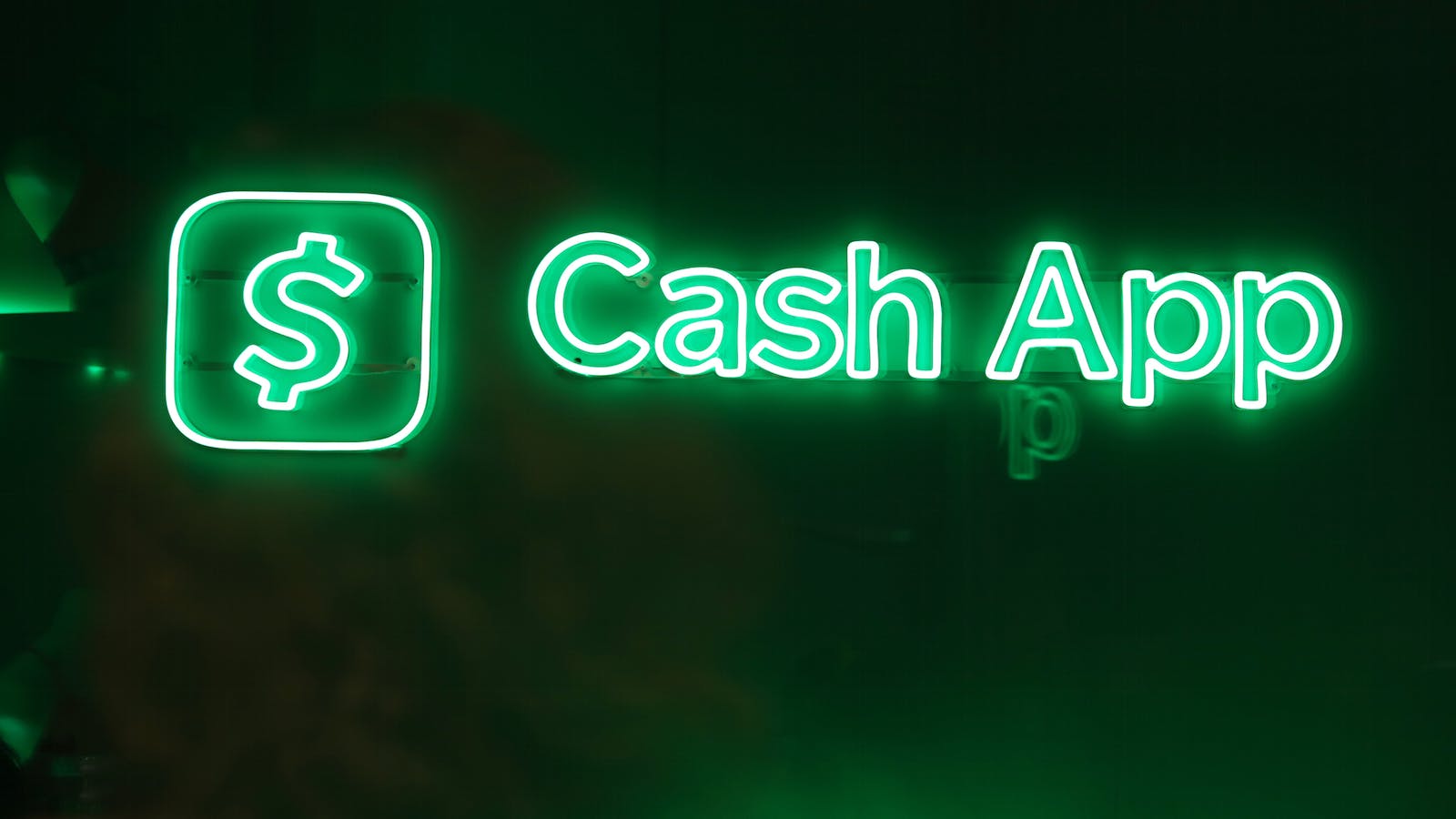Introduction
Welcome to the world of investing using Cash App! In this digital age, Cash App has revolutionized the way we handle our finances, offering a convenient and user-friendly platform for sending money, paying bills, and even investing. Whether you’re a seasoned investor or just starting out, Cash App provides an accessible and intuitive platform for individuals to invest their money.
With a wide range of investment options and a user-friendly interface, Cash App allows users to easily navigate the world of investments, without the need for complicated brokerage accounts or extensive financial knowledge. Whether you’re interested in stocks, ETFs, or even Bitcoin, Cash App has you covered.
Setting up a Cash App account is a breeze, and once you’re up and running, you can link your bank account and start funding your Cash App balance. From there, you can explore the investment features offered by Cash App and start building your investment portfolio. Whether you’re looking to invest for the long-term or make shorter-term trades, Cash App offers a range of options to suit your needs.
This guide will walk you through the process of getting started with investing on Cash App. We’ll cover everything from setting up your account to choosing the right investments and managing your portfolio. We’ll also delve into the fees and charges associated with investing on Cash App, so you can make informed decisions about your investments.
So, if you’re ready to take control of your financial future and start investing using Cash App, let’s dive in and explore the exciting world of investment opportunities that await you.
What is Cash App?
Cash App is a popular mobile payment and peer-to-peer money transfer service developed by Square Inc. It allows users to send and receive money quickly and securely, all with just a few taps on their smartphone. But Cash App is not limited to just money transfers – it also offers a range of other features, including the ability to pay bills, receive direct deposits, and most importantly, invest your money.
With Cash App, you have the option to link your bank account to your Cash App account, making it easy to transfer funds back and forth between the two. This seamless integration allows for swift and convenient transactions, eliminating the need for paper checks or physical cash. Cash App also offers a Cash Card, a customizable debit card that can be used for in-store purchases or to withdraw cash from ATMs.
One of the standout features of Cash App is its investment capabilities. Cash App provides its users with the opportunity to invest in stocks, exchange-traded funds (ETFs), and even Bitcoin. This means that you can grow your wealth and potentially earn returns by making investment decisions right from the app.
What sets Cash App apart from traditional brokerage accounts is its user-friendly interface and intuitive design. Cash App makes investing accessible to individuals who may not have a strong background in finance or investing. With just a few taps, you can research and select investments, track your portfolio performance, and make transactions in real-time.
While Cash App does offer investment options, it’s important to note that investing always carries risks. Before diving into the world of investing, it’s essential to educate yourself, understand your financial goals, and assess your risk tolerance. Cash App provides a platform for investing, but it’s up to you to make informed investment decisions that align with your financial objectives.
In the next section, we’ll explore how to set up a Cash App account, so you can begin your journey towards investing with ease.
Setting Up a Cash App Account
Getting started with Cash App is a straightforward process that takes just a few minutes. Follow these simple steps to set up your Cash App account and begin your journey towards investing:
- Download and Install Cash App: Start by downloading the Cash App from the App Store (for iOS users) or the Google Play Store (for Android users). Once downloaded, follow the on-screen instructions to install the app on your smartphone.
- Create an Account: Launch the Cash App and click on the “Sign Up” button to create a new account. Enter your mobile phone number or email address and create a unique password. Make sure to choose a strong password to protect your account.
- Link a Bank Account: To fully utilize the features of Cash App, you’ll need to link your bank account. Tap on the profile icon at the top-left corner of the app home screen, select “Banking,” and then tap on “Add a Bank.” Follow the instructions to securely link your bank account to Cash App.
- Identity Verification: Cash App requires identity verification to ensure the security and integrity of its platform. You’ll need to provide your full name, date of birth, and the last four digits of your Social Security Number (SSN). This information is encrypted and secured in accordance with industry standards.
- Choose a Unique $Cashtag: A $Cashtag is a unique username associated with your Cash App account. It allows others to send you money using your $Cashtag instead of your phone number or email address. Choose a $Cashtag that is easy to remember and represents you or your brand (if applicable).
- Set Up Security Measures: To protect your account, Cash App offers additional security measures such as enabling a PIN or fingerprint authentication. You can set up these security features by going to the “Profile” section of the app and selecting “Privacy & Security.’
- Customize your Account: Personalize your Cash App experience by adding a profile picture and selecting a unique display name. This helps your friends and family recognize your account when sending or receiving money.
- Explore Other Features: While we’re primarily focusing on investing, Cash App offers a range of other features such as Cash App Cash Card, direct deposit, and the ability to pay bills. Take some time to familiarize yourself with these features to make the most of your Cash App experience.
Once you’ve successfully set up your Cash App account, you’re ready to start funding your account and exploring the investment opportunities available. In the next section, we’ll discuss how to link your bank account to Cash App, so you can easily transfer funds and begin investing.
Linking your Bank Account to Cash App
Linking your bank account to Cash App is a crucial step in fully utilizing the features and functionality of the app, including funding your Cash App balance and investing your money. Follow these simple steps to link your bank account:
- Open Cash App: Launch the Cash App on your smartphone and sign in to your account using your login credentials.
- Access the Profile Section: Tap on the profile icon located in the top-left corner of the app home screen. This will take you to your account profile.
- Select “Banking”: Within your profile, locate and tap on the “Banking” tab. This will open the banking settings associated with your Cash App account.
- Add a Bank Account: On the banking settings page, you will find an option to “Add a Bank.” Tap on this option to initiate the process of linking your bank account.
- Choose Your Bank: Cash App provides a list of popular banks to choose from. Scroll through the list or use the search function to find your bank. Select your bank from the options presented.
- Enter Banking Information: Follow the prompts to enter your bank account details, including your account number and routing number. Ensure the accuracy of the information before proceeding.
- Confirm your Bank Account: Cash App may require you to verify the ownership of the linked bank account. This process typically involves sending a small amount of money to your bank account and asking you to confirm the exact amount received.
- Wait for Confirmation: The verification process may take a few days to complete. Cash App will notify you once your bank account is successfully linked and verified.
Once your bank account is linked to Cash App, you can easily transfer funds between your Cash App balance and your bank account. This allows you to efficiently fund your Cash App account and have the necessary funds available to invest.
It’s important to note that Cash App follows strict security protocols to ensure the safety of your financial information. Your bank account credentials are encrypted and securely stored on Cash App’s servers, providing you with peace of mind as you use the app.
In the next section, we’ll dive deeper into the process of funding your Cash App account, so you can start exploring and investing your money.
Funding Your Cash App Account
Once you’ve set up an account and linked your bank account to Cash App, you’re ready to fund your Cash App balance. Funding your account is essential for investing and taking advantage of the various features and services offered by Cash App. Here’s how you can fund your Cash App account:
- Open Cash App: Launch the Cash App on your smartphone and sign in to your account using your login credentials.
- Access the Balance Section: Locate and tap on the “Balance” tab, which is often displayed on the home screen of the app.
- Select “Add Cash”: Within the Balance section, you’ll find an option to “Add Cash.” Tap on this option to initiate the process of funding your Cash App account.
- Enter the Amount: Specify the amount of money you want to add to your Cash App account. You can manually enter the desired amount or use the available options, such as $10, $20, or $50, for convenience.
- Choose Your Funding Source: Cash App allows you to select the source of funds that you want to use for funding your account. You can either use your linked bank account or an external debit card.
- Verify Transaction Details: Review the transaction details, including the amount and the source of funds, to ensure everything is accurate. Make any necessary adjustments if needed.
- Confirm the Transaction: Once you’re satisfied with the transaction details, tap on the “Confirm” button to proceed with funding your Cash App account.
It’s important to note that Cash App may charge a fee for certain types of transactions, such as adding funds using a credit card. Make sure to review the fees and charges section within the app to understand any potential costs associated with funding your Cash App account.
After completing the funding process, the funds will be added to your Cash App balance, and you can start utilizing the funds for various purposes. Whether you want to invest in stocks, ETFs, or Bitcoin, or simply send money to friends and family, your funded Cash App balance allows you to navigate the app with ease.
In the next section, we’ll delve into the exciting world of investing with Cash App, exploring the various investment features and opportunities available to you.
Investing with Cash App
Cash App not only provides a convenient way to send and receive money, but it also offers a range of investment options to help you grow your wealth. Whether you’re a seasoned investor or just starting out, Cash App makes it easy to invest your money and potentially generate returns. Here’s how you can start investing with Cash App:
- Explore the Investing Tab: Within the Cash App, navigate to the “Investing” tab, typically located on the app’s menu bar at the bottom of the screen. Tap on this tab to access the investment features provided by Cash App.
- Get Familiar with the Investment Options: Cash App offers various investment opportunities, including individual stocks, exchange-traded funds (ETFs), and even Bitcoin. Take the time to research and understand each option to make informed investment decisions.
- Education and Market Data: Cash App provides educational resources, market data, and insights to support your investment journey. Explore this information to enhance your understanding of the investment landscape.
- Investment Amount: Determine the amount you want to invest. Cash App allows you to start investing with as little as $1, making it accessible to investors of all budget sizes.
- Select Investments: Once you have the investment amount in mind, browse through the available investment options on Cash App. Evaluate the performance, historical data, and potential future prospects of each investment before making a selection.
- Place an Investment Order: When you’ve identified an investment that aligns with your financial goals, tap on it to access more details. Review the information, including the current price and any specific terms. If you’re satisfied, place the investment order.
- Monitor the Performance: After placing an investment order, keep an eye on the performance of your investments. Cash App allows you to track your investment portfolio’s performance and view real-time updates.
- Make Adjustments: As your investment goals or market conditions change, you may want to make adjustments to your portfolio. Cash App enables you to manage your investments, including buying more shares, selling existing holdings, or diversifying your portfolio.
Remember that investing always carries risks, and it’s essential to conduct thorough research and exercise caution when making investment decisions. It’s recommended to consult with a financial advisor or do your own due diligence before investing substantial amounts.
By utilizing the investment features offered by Cash App, you have the opportunity to grow your wealth and potentially earn returns on your investments. Keep monitoring the performance of your investments, stay informed about market trends, and make strategic decisions to maximize your investment potential.
In the next section, we’ll take a closer look at the various investment features available on Cash App, empowering you to make the most of your investment experience.
Exploring Cash App’s Investing Features
Cash App’s investing features provide users with a range of tools and options to navigate the world of investing. By exploring and understanding these features, you can make informed investment decisions and maximize your investment potential. Let’s take a closer look at Cash App’s investing features:
- Individual Stocks: Cash App allows you to invest in individual stocks, giving you the opportunity to become a shareholder of specific companies. You can research different stocks, review performance data, and make investment decisions based on your analysis.
- Exchange-Traded Funds (ETFs): ETFs offer diversification by combining multiple stocks into a single investment fund. Cash App provides a selection of ETFs across different sectors, allowing you to easily invest in a diverse range of companies and industries.
- Bitcoin Investment: Cash App allows users to invest in Bitcoin, the world’s most popular cryptocurrency. With Cash App, you can buy and sell Bitcoin, taking advantage of the potential price fluctuations that occur in the cryptocurrency market.
- Auto-Invest: Cash App’s Auto-Invest feature enables you to set recurring investments on a schedule of your choice. This feature automates the investment process, helping you stay disciplined and consistent with your investment strategy.
- Fractional Shares: Cash App offers the option to purchase fractional shares, allowing you to invest in companies or ETFs even if their share prices are high. This feature enables you to own a portion of a share, making investing more accessible with smaller investment amounts.
- Investing Education: Cash App provides educational resources, articles, and insights to help users enhance their investing knowledge. By exploring these educational materials, you can gain a better understanding of investing concepts and make more informed investment decisions.
- Real-Time Market Data: Cash App provides real-time market data, enabling users to stay updated on stock and cryptocurrency prices, market trends, and relevant news. This information empowers investors to make informed decisions based on the most current market conditions.
- Easy Fund Transfer: Cash App allows you to easily transfer funds between your linked bank account and your Cash App balance. This makes it efficient to fund your account and manage your investments without hassle.
By exploring and utilizing these investing features, you can gain a comprehensive understanding of the investment opportunities available on Cash App. Whether you want to invest in individual stocks, ETFs, or even Bitcoin, Cash App provides a user-friendly platform to empower you as an investor.
In the next section, we’ll discuss how to choose the right investments on Cash App, ensuring that your investment choices align with your financial goals and risk tolerance.
Choosing the Right Investments on Cash App
When it comes to investing on Cash App, selecting the right investments is crucial to making informed decisions and achieving your financial goals. With a variety of investment options available, it’s important to choose investments that align with your objectives and risk tolerance. Here are some factors to consider when choosing investments on Cash App:
- Investment Goals: Identify your investment goals by considering factors such as your desired rate of return, investment time horizon, and risk tolerance. Are you investing for short-term gains or long-term growth? Clarifying your goals will help you select investments that align with your specific objectives.
- Risk Assessment: Evaluate your risk tolerance by considering factors such as your age, financial situation, and willingness to bear market volatility. Each investment carries its own level of risk, so it’s important to choose investments that you are comfortable with.
- Diversification: Diversifying your investments is important to reduce risk and protect your portfolio. Cash App offers a range of investment options, including individual stocks, ETFs, and even Bitcoin. Consider spreading your investments across different asset classes and industries to achieve a well-diversified portfolio.
- Research and Analysis: Before making any investment decisions, conduct thorough research and analysis. Review the historical performance of the investment, consider the company’s financial health and growth prospects, and analyze market trends. Cash App provides market data and insights, which can assist you in making informed investment choices.
- Long-Term Prospects: Assess the long-term prospects of the investment. Look for companies or sectors with strong fundamentals, innovative products or services, and a competitive edge. This can increase the likelihood of long-term growth and potentially higher returns.
- Consider Your Interests: Invest in companies or industries that align with your personal interests or areas of expertise. This can make investing more engaging and enjoyable, as you’ll have a deeper understanding of the businesses you’re investing in.
- Stay Informed: Continuously stay updated on the performance of your investments and be aware of any news or market developments that may impact them. Cash App provides real-time market data and insights, enabling you to make informed decisions based on the latest information.
Choosing the right investments on Cash App requires careful consideration of your financial goals, risk tolerance, and thorough analysis of the available options. By following these principles, you can build a well-diversified portfolio and potentially enhance your investment performance.
In the next section, we’ll discuss how to monitor and manage your investments on Cash App to ensure they remain aligned with your goals.
Monitoring and Managing Your Investments
Once you’ve made your investment choices on Cash App, it’s crucial to regularly monitor and manage your investments to ensure they remain aligned with your financial goals. Here are some key steps to effectively monitor and manage your investments:
- Tracking Performance: Keep a close eye on the performance of your investments. Cash App provides tools and features that allow you to monitor the performance of your portfolio, including real-time updates and historical data. Regularly reviewing your investments will help you assess their progress and make any necessary adjustments.
- Set Realistic Expectations: Understand that investments can experience fluctuations in value, and it’s essential to have a realistic perspective. Avoid making impulsive decisions based on short-term market movements. Instead, focus on your long-term investment goals and evaluate performance over time.
- Rebalancing Your Portfolio: Periodically review your investment portfolio and consider rebalancing if necessary. Rebalancing involves adjusting the allocations of your investments to maintain your desired risk level and asset allocation. This can entail buying or selling assets to realign your portfolio with your investment strategy.
- Stay Informed: Stay updated with the latest market news, economic trends, and company-specific developments. Use the research and educational resources provided by Cash App, as well as external sources, to stay well-informed about the investments you hold. This knowledge will help you make informed decisions and adapt your strategy as needed.
- Regularly Review your Goals: Regularly reassess your investment goals and adjust them as necessary. Life circumstances and financial objectives may change over time, and it’s important to ensure that your investments continue to align with your evolving needs.
- Consider Taking Profits or Cutting Losses: If an investment has significantly increased in value or is consistently performing poorly, evaluate whether it’s time to take profits or cut losses. Selling an overperforming investment allows you to lock in gains, while selling an underperforming investment can help limit losses and redirect funds to potentially better opportunities.
- Review Investing Fees and Charges: Be aware of the fees and charges associated with investing on Cash App. Regularly review the fee structure to ensure that it aligns with your investment strategy and consider how these fees may impact your overall returns.
- Consult with Professionals: If you are unsure about any aspect of monitoring or managing your investments, consider seeking advice from a financial advisor or investment professional. They can provide tailored guidance and help you make informed decisions based on your unique circumstances.
By monitoring and managing your investments on Cash App, you can make necessary adjustments, optimize your portfolio, and stay on track towards achieving your financial goals. Regularly reviewing performance, staying informed, and being proactive will empower you to make informed decisions and potentially maximize your investment potential.
In the next section, we’ll explore the fees and charges associated with investing on Cash App, so you can be fully aware of the costs involved in your investment journey.
Understanding Cash App’s Investing Fees and Charges
When investing on Cash App, it’s important to understand the fees and charges associated with your investments. Familiarizing yourself with these costs will allow you to make informed decisions and manage your investment expenses effectively. Here’s what you need to know about Cash App’s investing fees and charges:
- Stock and ETF Investments: Cash App charges a small fee for buying or selling individual stocks and ETFs. This fee is typically a percentage of the total transaction amount. While the fee may vary, it is generally lower compared to traditional brokerage firms, making Cash App a cost-effective option for investing.
- Bitcoin Investments: Cash App may also charge fees for buying or selling Bitcoin. Similar to stock and ETF transactions, these fees are typically a percentage of the total transaction amount. Cash App provides transparency regarding the fees associated with Bitcoin transactions, allowing you to calculate and understand the costs.
- Instant Withdrawal Fee: If you choose to instantly withdraw funds from your Cash App balance to your linked bank account, Cash App may charge a fee for this expedited service. This fee is typically a small percentage of the total withdrawal amount and can vary based on the transaction size.
- Funding Source Fees: It’s important to note that Cash App may pass on any fees charged by your linked bank account or external debit card issuer. For example, if your bank charges a fee for transferring funds to Cash App, that fee may be reflected in your transaction.
- Foreign Exchange Fees: If you make international transactions on Cash App, foreign exchange fees may apply. These fees are associated with converting currency and can vary depending on the specific transaction. It’s advisable to review the foreign exchange fee details provided by Cash App to understand the costs involved.
- Fee Structure Transparency: Cash App provides transparency in its fee structure, allowing you to review and understand the costs associated with your investments. Within the app, you can access the “Fees & Offers” section to view the specific charges applicable to your investments and transactions.
- Review Fee Updates: As with any financial service, it’s important to periodically review and stay updated on Cash App’s fee structure. Fee updates may occur, so it’s beneficial to stay informed about any changes that may impact your investment costs.
By understanding Cash App’s investing fees and charges, you can factor these costs into your investment strategy and make informed decisions. While Cash App typically offers competitive fees compared to traditional brokers, it’s essential to review the fee structure and consider how these fees may impact your investment returns.
Keep in mind that fees are just one aspect to consider when evaluating the overall value and convenience of investing on Cash App. Consider the platform’s ease of use, available investment options, real-time market data, and additional features when assessing the suitability of Cash App for your investment needs.
In the next section, we’ll provide some tips for successful investing on Cash App, empowering you to make the most of your investment journey.
Tips for Successful Investing on Cash App
When it comes to investing on Cash App, following a few key tips can help you make informed decisions and increase your chances of success. Here are some important tips to consider for successful investing on Cash App:
- Establish Clear Goals: Clearly define your investment goals, whether it’s long-term wealth accumulation, funding a specific milestone, or generating passive income. Having a clear objective will guide your investment decisions and help you stay focused.
- Do Your Research: Before investing, conduct thorough research on the investments you’re considering. Understand the fundamentals, growth prospects, and risks associated with each investment option. Cash App provides educational resources and real-time market data to assist you in making informed decisions.
- Stay Informed: Keep up with market trends, economic news, and any developments that may affect your investments. Regularly review financial news sources, corporate earnings reports, and industry updates. This knowledge will enable you to make informed investment choices.
- Diversify Your Portfolio: Diversification is key to managing risk. Spread your investments across various asset classes, sectors, and industries. This can help alleviate the impact of any single investment’s performance on your overall portfolio.
- Consider Dollar-Cost Averaging: Dollar-cost averaging involves investing a set amount of money at regular intervals, regardless of market conditions. This strategy mitigates the impact of short-term market volatility and can result in a lower average cost per share over time.
- Practice Patience: Investing is a long-term endeavor. Avoid making impulsive decisions based on short-term market fluctuations. Stay disciplined and stick to your investment strategy, even during periods of market volatility.
- Monitor Your Investments: Regularly review and monitor the performance of your investments on Cash App. Take advantage of the app’s tools and features to stay updated on the progress of your portfolio. Evaluate your investments periodically and make adjustments as needed to keep them aligned with your goals.
- Manage Your Emotions: Investing can be emotionally charged, especially during market downturns. Avoid making hasty decisions driven by fear or greed. Instead, rely on your research, analysis, and long-term investment strategy to guide your actions.
- Consider Professional Advice: If you’re unsure about investing or need personalized guidance, consider consulting with a financial advisor or investment professional. They can provide expert advice tailored to your specific financial situation and goals.
- Stay Consistent: Consistency is key in investing. Stick to your investment plan, contribute regularly, and avoid trying to time the market. Over time, consistent investing can help build wealth and potentially generate significant returns.
By following these tips, you can enhance your investment journey on Cash App and increase your chances of achieving your financial goals. Remember, investing involves risk, and it’s important to make informed decisions based on your own financial circumstances and risk tolerance.
With Cash App’s user-friendly interface, diverse investment options, and educational resources, you have the tools at your disposal to navigate the world of investing and potentially grow your wealth.
Now that you have a better understanding of investing on Cash App and some useful tips, you’re ready to embark on your investment journey with confidence.
Conclusion
Cash App offers a convenient and user-friendly platform for individuals to invest their money and take control of their financial future. Whether you’re a seasoned investor or just starting out, Cash App provides a range of investment options and features to suit your needs.
From setting up your Cash App account to linking your bank account and funding your balance, the process is simple and seamless. With just a few taps on your smartphone, you can access a world of investment opportunities, including individual stocks, ETFs, and even Bitcoin.
To be successful in investing on Cash App, it’s important to consider factors such as your investment goals, risk tolerance, and diversification. Do thorough research, stay informed about market trends, and monitor your investments regularly to make informed decisions and manage your portfolio effectively.
Additionally, understanding Cash App’s investing fees and charges is essential for managing your investment expenses. Review the fee structure and factor in costs when making investment decisions.
By following tips such as setting clear goals, diversifying your portfolio, and practicing patience, you can increase your chances of success and maximize your investment potential on Cash App. Remember to stay consistent, manage your emotions, and consider professional advice when needed.
Investing on Cash App provides an accessible and intuitive way to grow your wealth and potentially earn returns. It’s important to keep in mind that investing always carries risks, and it’s essential to make informed decisions based on your own financial situation.
Now that you have the knowledge and tools to invest on Cash App, take action, and start your investment journey today. With discipline, research, and careful consideration, you can work towards achieving your financial goals and securing your future.
So, what are you waiting for? Dive into the exciting world of investing with Cash App, and begin your path towards financial success.

























